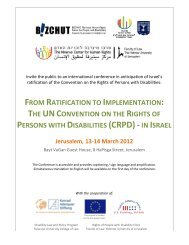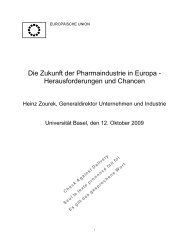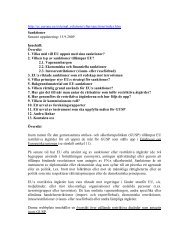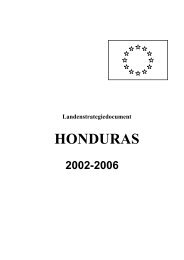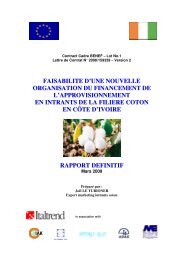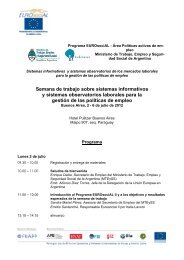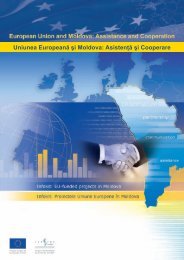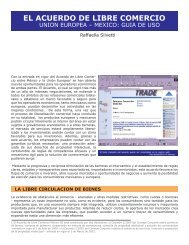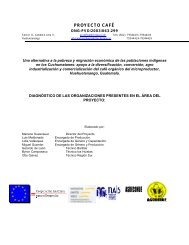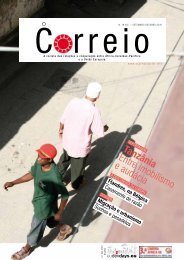RESOURCE COMPETITION IN THE 21ST CENTURY
RESOURCE COMPETITION IN THE 21ST CENTURY
RESOURCE COMPETITION IN THE 21ST CENTURY
You also want an ePaper? Increase the reach of your titles
YUMPU automatically turns print PDFs into web optimized ePapers that Google loves.
the next few decades. This is especially truein the Middle East and North Africa, wherefresh water is already in short supply andpopulation growth rates are among the highestin the world. For example, the number ofpeople who will be relying on the Nile River,the Jordan River and the Tigris—Euphratessystem for all or most of their water supplywill grow from approximately 325 millionin 2000 to 740 million in 2050 — withoutany appreciable increase in the net supplyof water in the region. Unless the existingsources of supply are used more efficiently,or the desalination of seawater proves moreaffordable, competition over access to waterwill become more intense in these areas andcould lead to war. 7Population growth is also likely to placegrowing pressure on the world’s supply ofarable land. This is especially true in thedeveloping areas, where many people stillrely on agriculture for their basic survival orfor family income. As population expands,farmers tend to crop their existing plots moreintensively or to bring marginal lands intocultivation, thereby depleting the soil of essentialnutrients and risking the onset oferosion. The ever-growing demand for croplandalso leads to the accelerated clearingof virgin forests, eradicating the habitats ofmany unique plant and animal species.UrbanisationClosely related to population growth butadding distinctive pressures of its own is thegrowing concentration of humans in largetowns and cities. Throughout the world —but especially in the developing world —people are moving from rural to urban areas,and from small to large cities. According toWRI, the world’s urban population surgedfrom 1.5 billion people in 1975 to 2.6 billionin 1995, and is expected to jump againto 5.1 billion by the year 2025. 8 In manycases, moreover, people are moving to verylarge cities: by 2015, an estimated 1.7 billionpeople (nearly one-fourth of the world’stotal population) will be living in cities ofover 1 million people. 9 This has enormousimplications for global resource stocks, asurban communities tend to consume moreenergy, water and building materials, and togenerate far more waste products than ruralareas. The outward expansion of cities andsuburbs is also usurping areas previouslyused for agriculture, thereby adding to thepressure on the world’s remaining supply ofarable land. 10From a resource perspective, the impact ofurbanisation cannot always be distinguishedfrom that of globalisation and populationgrowth. All of these phenomena are addingto the worldwide demand for water, energyand other basic commodities. But the concentrationof more and more people in largecities does have a particularly pronouncedimpact on global water supplies, as urbanareas require vast quantities of water forsanitation and personal use, and also becausecities produce copious waste productsthat are often poured into rivers and lakes— thereby diminishing the amount of cleanwater available to other users. Providingadequate supplies of water to large urbancentres and neighbouring areas, therefore,prove to be one of the most demanding tasksfacing local and national leaders in the 21 stcentury.Resource depletionThe three factors described above —globalisation, population growth and urbanisation— are combining to create a fourth:the irreversible depletion of some nonrenewableresources. While the earthcontains large amounts of many of the mostvital materials, these supplies are not unlimitedand can be exhausted through excessiveextraction or utilisation. And, in the case ofsome vital resources, humans have reachedthis point or are likely to do so in the earlydecades of the 21 st century. For example,humans have harvested some species of fish(such as the once-prolific cod) so intensivelythat they have virtually disappeared from7 For background and data, see Peter H. Gleick (ed.), Water in Crisis: A guide to the world’s fresh water resources (New York and Oxford: Oxford University Press, 1993);Sandra Postel, Last Oasis: Facing water scarcity (New York: W.W. Norton, 1997).8 World Resources Institute (WRI) (1996). World Resources 1996-1997. New York and Oxford: Oxford University Press, p. 150.9 See World Resources Institute (1996), op. cit., p. 9.10 For discussion, see World Resources Institute (1996) op. cit., pp. 57-80.[ 296 ]




